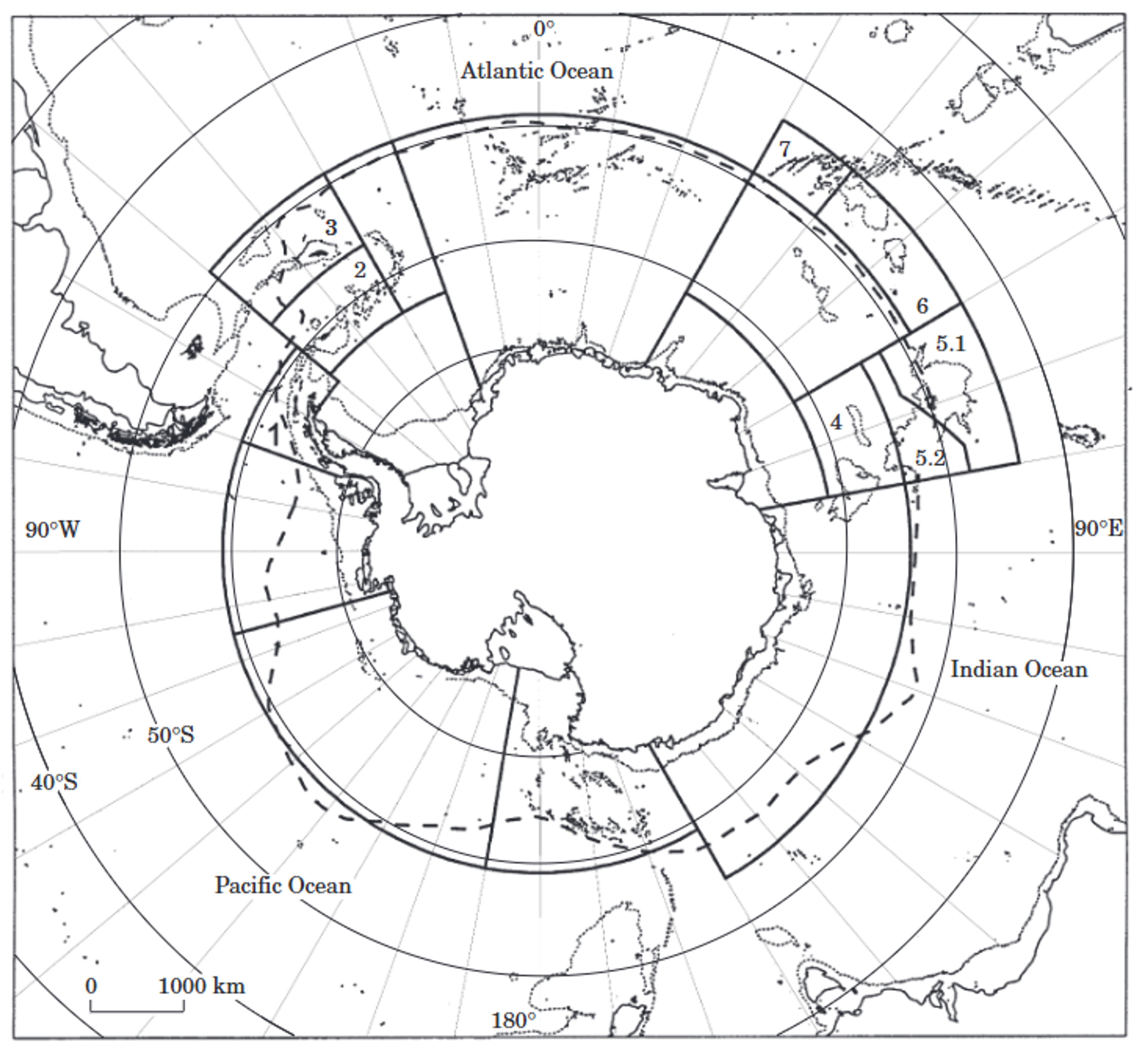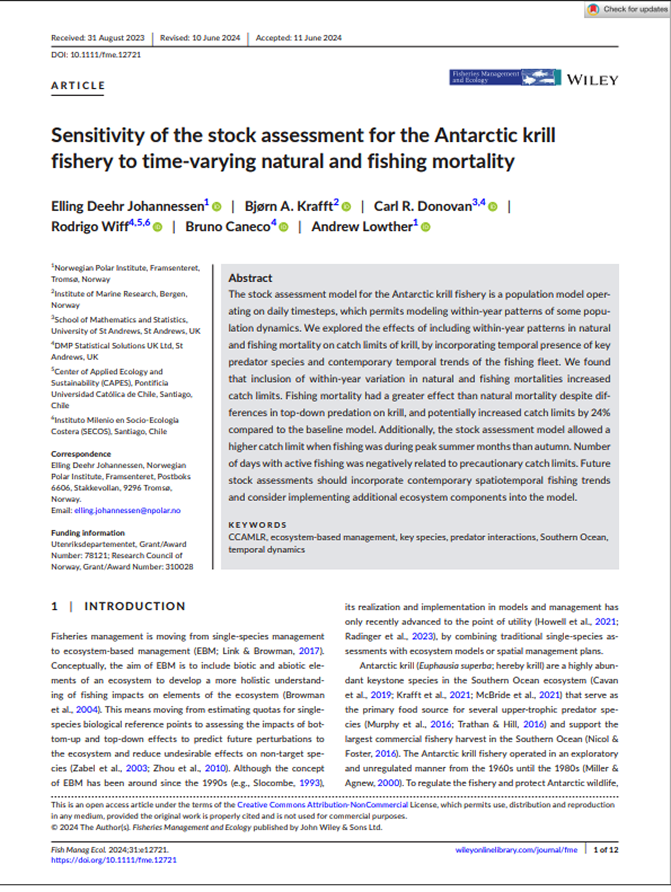Biomass
Fisheries management
Antarctic ecosystem
Krill (Euphausia superba)
Managing fisheries to conserve the Antarctic marine ecosystem: practical implementation of the Convention on the Conservation of Antarctic Marine Living Resources (CCAMLR)
Summary
This paper traces how ecosystem-based fisheries management developed under This paper traces how ecosystem-based fisheries management developed under CCAMLR, the first international agreement to incorporate ecosystem protection goals into fishing regulations. CCAMLR emerged from concerns that large-scale krill harvesting could harm whale and seal population recovery, following historical collapses of seals, whales, and fish species from overexploitation. The convention established three core conservation principles: maintaining steady reproduction in fished species, preserving natural relationships between different species, and ensuring any ecosystem changes could be reversed within 20-30 years.CCAMLR progressed from reactive management in the 1980s to a precautionary approach in the 1990s, creating innovative tools like the Generalized Yield Model (GYM) for determining fishing quotas when scientific data is incomplete, and establishing the CCAMLR Ecosystem Monitoring Program (CEMP) to track ecosystem responses. Two important insights emerged: effective conservation requires implementing management actions even with limited scientific knowledge, and researchers can reach agreement despite data uncertainties.While current krill fishing remains sustainable, CCAMLR faces ongoing challenges from illegal fishing that threatens stock sustainability. The convention's ultimate test will come as the krill fishery expands, demanding robust management procedures to prevent localized ecosystem impacts.

1
Map of the Southern Ocean displaying the CCAMLR management area boundary and its statistical zones and subdivisions (thick solid lines), the Antarctic Polar Front ocean current (dashed line), land boundaries (solid lines), and the 2000-meter depth contour lines throughout the region (dotted lines). The numbered locations indicate: 1. Antarctic Peninsula and integrated research area; 2. South Orkney Islands; 3. South Georgia Island and integrated research area; 4. Prydz Bay integrated research area; 5.1. Kerguelen Island; 5.2. Heard Island and McDonald Islands; 6. Crozet Island; 7. Prince Edward and Marion Islands.Key Findings
1
CCAMLR became the first international fishing agreement to include ecosystem protection as a primary goal. 2
Generalized Yield Model (GYM) evaluates fishing quotas while accounting for scientific uncertainty and ecosystem impacts. 3
For krill: accepts only 10% risk of breeding population falling below 20% of unfished levels over 20 years. 4
Predator protection criterion ensures 75% of krill population remains available for ecosystem food web needs. 5
CCAMLR Ecosystem Monitoring Program (CEMP) tracks how predator species respond to fishing activities. 6
Current krill harvest (~80-100,000 tons) remains well below precautionary safety limits. 7
CCAMLR's ultimate challenge will be managing future krill fishery expansion to prevent localized ecosystem impacts.

